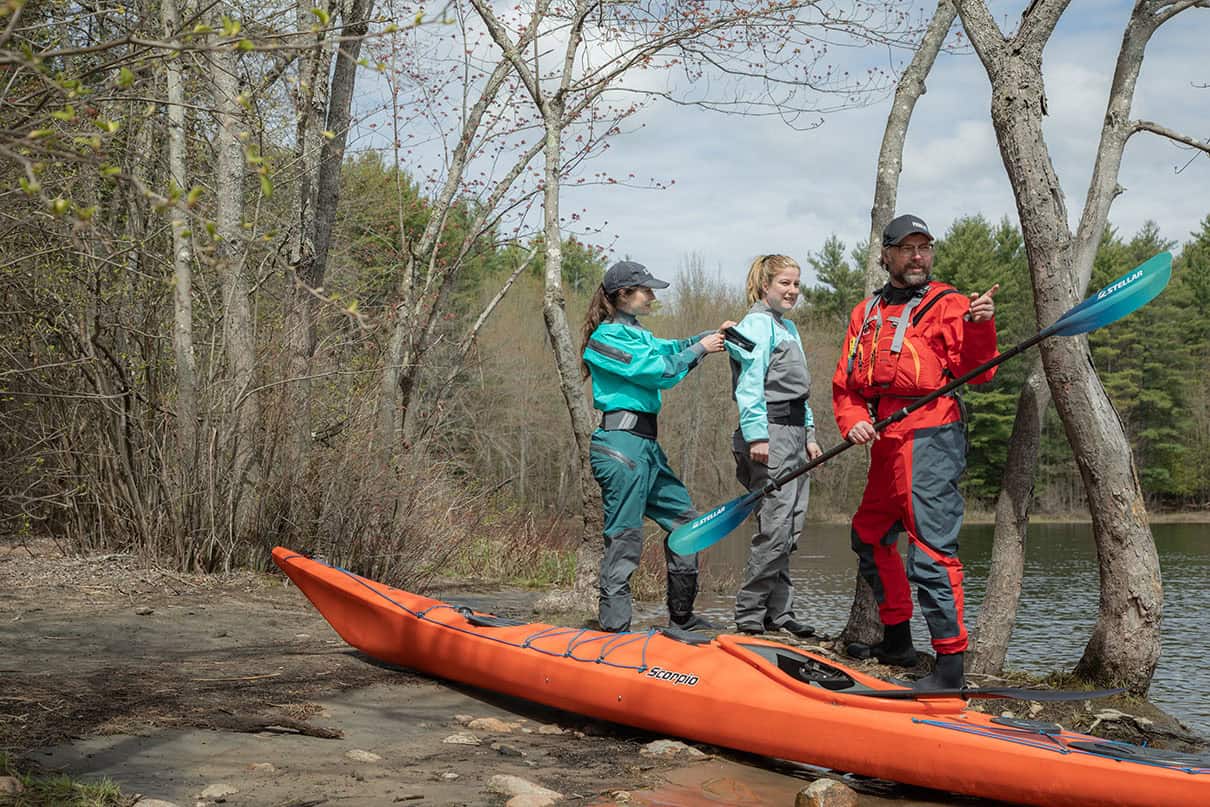Planning an ice-out paddling trip? Watch this video first.
In this 30-minute video, seven hardy volunteers from a variety of different industries plunge into icy cold water to learn how to survive potentially deadly falls overboard.
Under the watchful direction of Dr. Gordon Giesbrecht, Professor of Thermophysiology at the University of Manitoba, a safety crew stands by to ensure the wellbeing of participants. This ‘safety net’ significantly reduced or even eliminated the fear and panic that a regular boater would experience in a real cold water immersion. The knowledge, fitness levels and safety net, led to an expectation that these boot campers would outperform the average boater in this difficult situation. Even so—all eventually experienced swim failure.
The key to survival in cold water immersion is wearing a lifejacket whenever you are on or near the water. The goal is to keep your head and face out of the water while you either try to rescue yourself or wait for rescue to arrive. Wearing immersion protection, like a wetsuit or drysuit, increases your chances of survival.
The video also details the 1-10-1 principle, which is a simple way to remember the first three phases of cold water immersion and the approximate time each phase takes:
LearnThe 1-10-1 principle
1 – Cold Shock.
An initial deep and sudden Gasp followed by hyperventilation that can be as much as 600-1000% greater than normal breathing. You must keep your airway clear or run the risk of drowning. Cold Shock will pass in about 1 minute. During that time concentrate on avoiding panic and getting control of your breathing. Wearing a lifejacket during this phase is critically important to keep you afloat and breathing.
10 – Cold Incapacitation.
Over approximately the next 10 minutes you will lose the effective use of your fingers, arms and legs for any meaningful movement. Concentrate on self rescue initially, and if that isn’t possible, prepare to have a way to keep your airway clear to wait for rescue. Swim failure will occur within these critical minutes and if you are in the water without a lifejacket, drowning will likely occur.
1 – Hypothermia.
Even in ice water it could take approximately 1 hour before becoming unconscious due to Hypothermia. If you understand the aspects of hypothermia, techniques of how to delay it, self rescue and calling for help, your chances of survival and rescue will be dramatically increased.
Learn more about the dangers of cold water immersion and how to survive at Cold Water Boot Camp.




